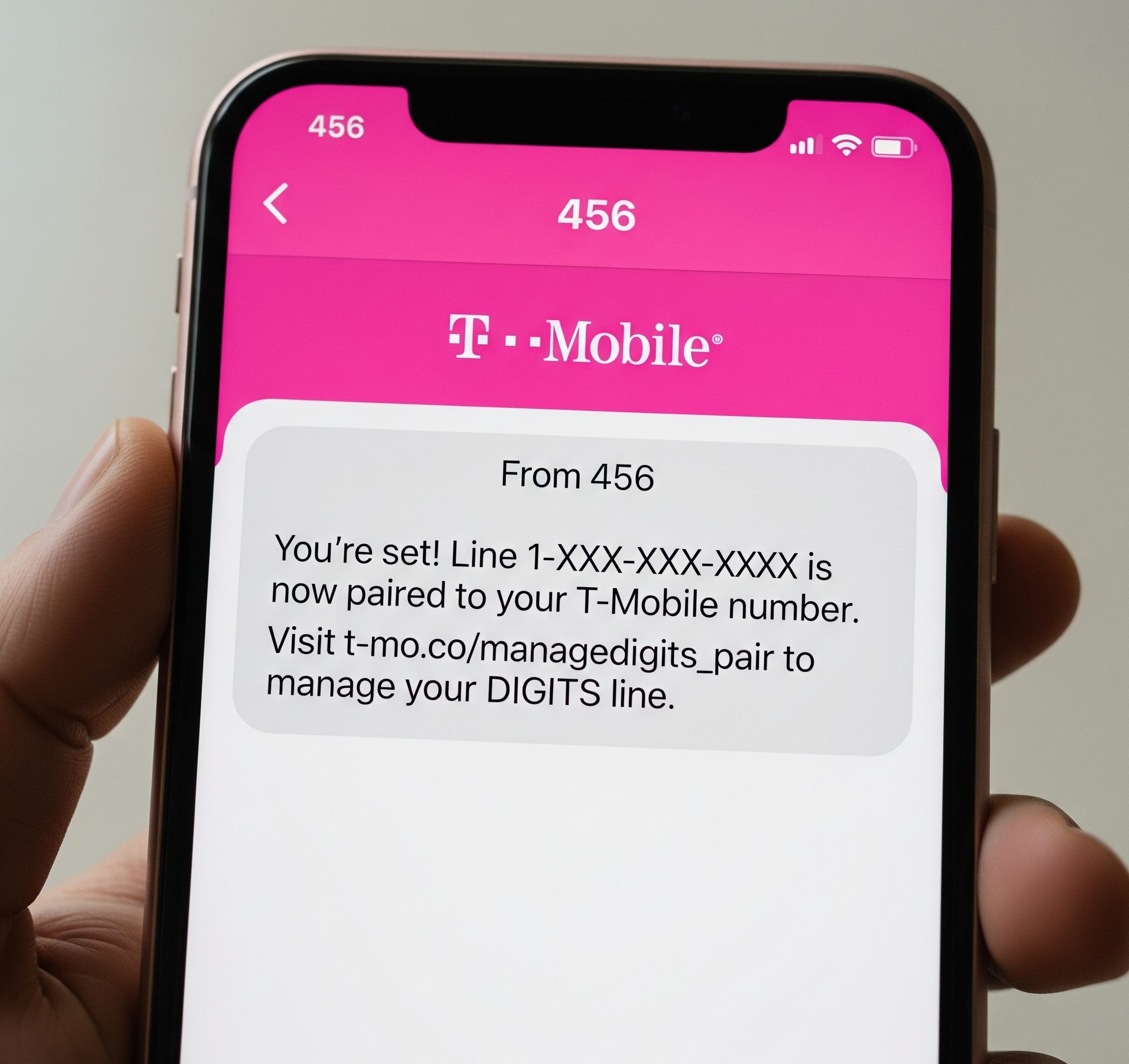In the digital age, our smartphones are more than just communication devices; they are hubs for managing our lives, from banking to social connections. For T-Mobile customers in the United States, receiving a text message can be a routine event, but occasionally, a message from an unfamiliar short code like 456 T-Mobile text can raise questions or even concerns. Is it legitimate? What does it mean? This article aims to demystify the origins and implications of a 456 T-Mobile text, providing clarity for American consumers.
Contents
What is a Short Code?
Before diving into the specifics of 456 T-Mobile text, it’s important to understand what a “short code” is. Unlike standard 10-digit phone numbers, short codes are typically 5 or 6-digit numbers used by businesses, organizations, and service providers to send mass texts, conduct marketing campaigns, or facilitate automated interactions. They are often used for:
- Account alerts: Notifications about billing, data usage, or service changes.
- Two-factor authentication (2FA): Sending security codes to verify identity.
- Marketing promotions: Opt-in messages about deals or new products.
- Customer service interactions: Automated responses or self-service options.
- Donations: Facilitating charitable contributions.
Short codes are generally country-specific, meaning a code that works in the U.S. might not work in another country, and vice-versa.
Decoding “456 T-Mobile Text”: A Legitimate Source
For T-Mobile customers, a message originating from 456 T-Mobile text is almost always legitimate. T-Mobile, like other major carriers, utilizes various short codes for official communications with its subscribers. The number 456 is specifically identified as one of T-Mobile’s official self-service short codes and is used for a range of legitimate notifications.
Common Uses of 456 T-Mobile Text:
While the exact content of a 456 T-Mobile text can vary, some of the most frequent reasons you might receive a message from this number include:
- Account Information and Alerts: This is a primary function. You might receive messages about your current bill, data usage alerts (e.g., “You’ve used 80% of your high-speed data”), payment reminders, or confirmations of account changes.
- Prepaid Account Management: For T-Mobile prepaid customers, 456 T-Mobile text is often used for messages related to refills, low balance alerts, or plan expiration notifications.
- DIGITS Line Management: If you utilize T-Mobile’s DIGITS service, which allows you to use your T-Mobile number across multiple devices, messages from 456 T-Mobile text might relate to pairing new lines or managing your DIGITS settings.
- Security Notifications: In some cases, it could be part of a security alert, such as a notification about a suspicious login attempt on your T-Mobile account, requiring you to verify your identity.
- Service Updates or Changes: T-Mobile may use this short code to inform you about important updates to their network, service changes, or new features available to your plan.
It’s important to note that while 456 T-Mobile text is a legitimate source, the content of the message is what truly matters. Always exercise caution and verify any links or requests for personal information.

Distinguishing Legitimate Messages from Scams
While 456 T-Mobile text itself is typically legitimate, scammers are increasingly sophisticated and may try to spoof short codes or create highly convincing phishing attempts. Here’s how American consumers can protect themselves:
Red Flags to Watch Out For:
- Suspicious Links: Be wary of links in text messages that don’t clearly lead to an official T-Mobile domain (e.g., t-mobile.com, t-mo.co – T-Mobile’s official URL shortener). If a link looks questionable, do not click it.
- Requests for Personal Information: T-Mobile will generally not ask for sensitive personal information like your full Social Security number, banking details, or account PIN directly through a text message. If a text from 456 T-Mobile text asks for this, be extremely suspicious.
- Urgency and Threats: Scammers often try to create a sense of urgency or threaten service disruption (“Your account will be suspended immediately if you don’t click this link!”). Legitimate messages from T-Mobile will rarely employ such aggressive tactics.
- Grammar and Spelling Errors: While not foolproof, texts with numerous grammatical errors or typos can be a sign of a phishing attempt.
- Unexpected Messages: If you receive a text from 456 T-Mobile text about something entirely unrelated to your account activity or recent interactions, it’s worth a second look.
How to Verify a Suspicious 456 T-Mobile Text:
If you receive a 456 T-Mobile text and are unsure about its legitimacy, here are steps you can take:
- Do NOT Click Links or Respond: Avoid clicking any links or replying to the message directly.
- Access Your Account Directly: The safest way to verify any account-related message is to log into your T-Mobile account through the official T-Mobile app or website (my.t-mobile.com) on your computer or phone. Check your notifications, bill, or data usage directly there.
- Call T-Mobile Customer Service: If you’re still concerned, call T-Mobile’s official customer service line by dialing 611 from your T-Mobile phone or 1-800-T-MOBILE (1-800-866-2453) from any phone. Explain the message you received and ask them to verify its authenticity.
- Forward to 7726 (SPAM): You can report suspicious texts to T-Mobile by forwarding them to 7726. This helps T-Mobile and other carriers track and block spam and phishing attempts.
The Broader Context: T-Mobile’s Commitment to Security
T-Mobile, like all major telecommunications companies, invests heavily in cybersecurity measures to protect its customers from fraud and scams. The use of official short codes like 456 T-Mobile text is part of a broader strategy to streamline communication and provide secure self-service options. However, as cyber threats evolve, customer vigilance remains a critical line of defense.
T-Mobile offers tools like Scam Shield, which helps identify and block scam calls and texts. Familiarizing yourself with these features and regularly reviewing your account activity are proactive steps that enhance your digital security.
Conclusion: Staying Informed in a Connected World
The presence of a 456 T-Mobile text on your phone is, in most cases, a normal and legitimate communication from your wireless provider. It signifies T-Mobile’s use of short codes to efficiently deliver important account information and updates. However, in an era where digital scams are rampant, it pays to be an informed consumer. By understanding the typical uses of 456 T-Mobile text and knowing how to identify and report suspicious activity, American T-Mobile users can navigate their mobile experience with greater confidence and security. Always remember: when in doubt, verify directly with T-Mobile through official channels.







